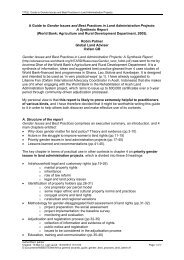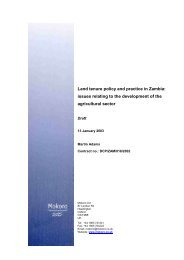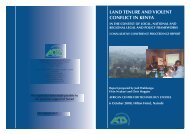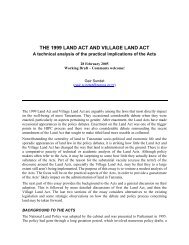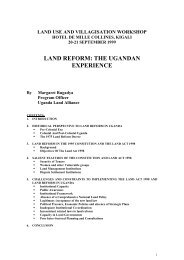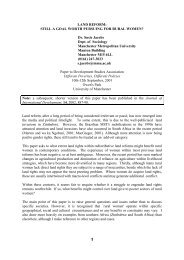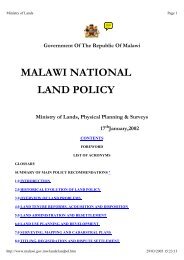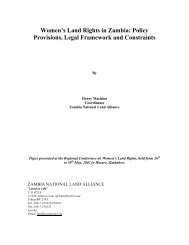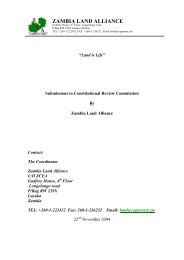Download - Mokoro
Download - Mokoro
Download - Mokoro
- No tags were found...
You also want an ePaper? Increase the reach of your titles
YUMPU automatically turns print PDFs into web optimized ePapers that Google loves.
8ownership. While both projects were heavily dependent on NGO support, the project atHaarlem was initially more successful, with less group-based conflict. The Haarlemgroup of farmers harvests individually and supply wet honeybush to a processor as acollective. At Ericaville, extension of the project into value-adding to wet honeybush,through their own processing and packaging plant established with ComprehensiveAgricultural Support Programme (CASP) funds, enabled them to market their produceand fetch far higher prices, and so to pay out small dividends each year to members,while also maintaining capital for operating costs and maintenance. Both make asubstantial contribution to livelihoods and, while Ericaville is the more commercialproject, it is not yet clear which is making a greater difference in beneficiaries’livelihoods.Source: Kleinbooi 2007aHybrid arrangements that combine some group and some individual production havealso emerged. Most commonly, where land use involves household-based cultivation ofarable plots, grazing land may be jointly used and managed by members – thusmirroring the types of land use and tenure arrangements in communal areas (Andrew etal 2003). Such situations may be complicated by the unequal ownership of livestockamong members, and therefore the potential for better-off project members to dominateuse of this common resource and also by the purchase of jointly owned livestock (‘CPAcattle’) with the balance of grant funding – meaning that common grazing land is used bya combination of individually owned livestock, of varying numbers, and jointly ownedlivestock (CSIR 2005).In group-based projects, a combination of commodity production and production for ownconsumption is a common pattern – whether part of the original plan or not. Productionof crops for sale is more common as a group-based enterprise, while production of foodfor consumption is usually cultivated separately by households (Andrew et al 2003). It isprecisely the exclusion of the latter activity from business plans that leads to deviationfrom planned land use, as project members find that they do not derive immediatebenefits from contributing labour and resources to group production (CSIR 2005).Compared to collective operation of commercial farms, this is a low-risk strategy thatallows poor people to produce for markets, but also to consume their produce, in theabsence of other sources of income or if prices are too low.Individual or household-based projectsIndividual or household-based projects are less common in land reform and have theadvantage of minimizing or avoiding the risk of group-based conflicts. These haveemerged where claimants (in restitution) have family-based claims, but also, morenotably, in redistribution where applicants are better-off and able to make substantialcontributions of cash, loans and assets in order to leverage larger grants, thusminimizing the need to expand the applicant group to make up the purchase price andrelated costs.This model has been actively promoted through LRAD, as provincial offices of DLAadopted maximum project sizes, often aiming for no more than 15 members per project(Jacobs et al 2003). The small sizes of grants mean that this type of project is onlypossible where applicants have substantial resources from non-farm activities (MALAPolicy Options for Land and Agrarian ReformProgramme for Land and Agrarian Studies, University of the Western Cape




